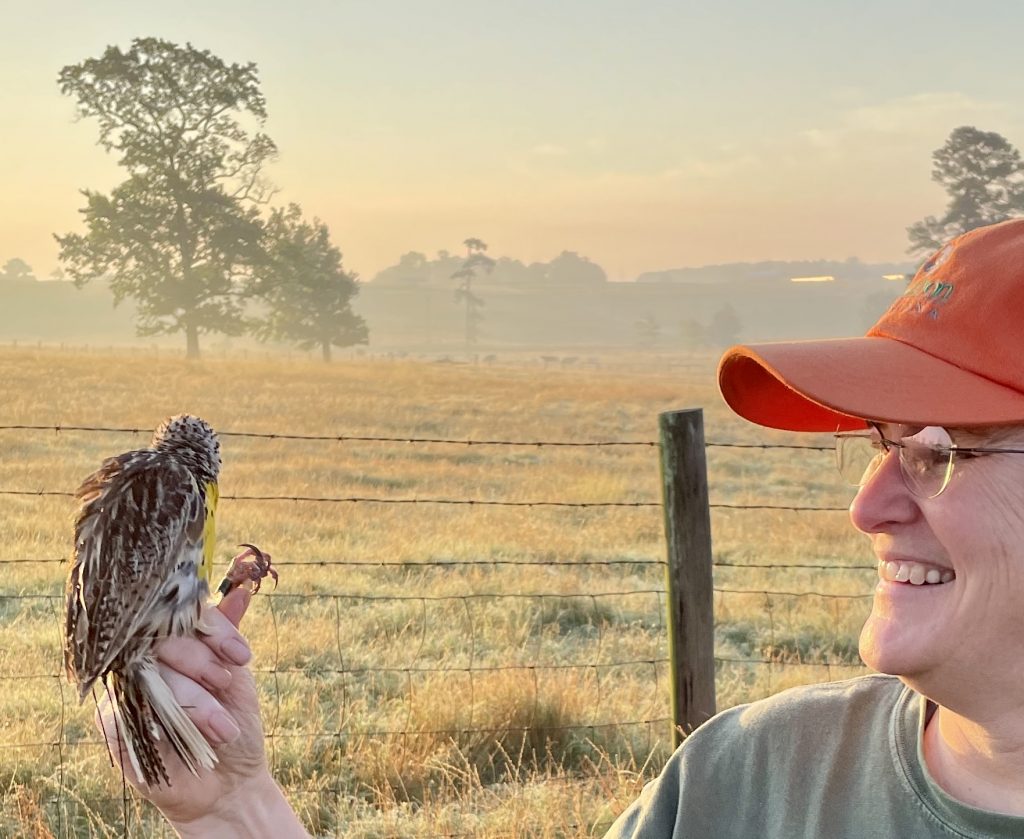
What is your job, what do you work on, and what is your involvement with GoMAMN?
I am an Associate Professor and the Environmental Science Program Coordinator in the School of Biological Sciences at Louisiana Tech University. My research focuses on how animals respond to stressors in their environment. Current projects include measuring heavy metals in the tissues of waterfowl, monitoring landbirds in open pine habitats with varying degrees of restoration effort, examining heterophil:lymphocyte ratios in a long-lived seabird, and searching for soil microbes capable of degrading organophosphate pesticides. We recently started a project examining microplastic ingestion by waterfowl in collaboration with Jacquie Grace at Texas A&M. As you can tell from these projects, my approach is integrative encompassing physiology, behavior, ecology, conservation, demography, endocrinology, immunology, and toxicology. My involvement with GoMAMN: I’m a coauthor on the Avian Health chapter in the Strategic Guidelines and co-chair of the Avian Health and Seabird Working Groups.
Tell us about yourself.
I’m originally from North Carolina, growing up in Raleigh. I was a swimmer and spent my teenage years as a lifeguard and swim coach. While an undergraduate at UNC-Chapel Hill, I worked in a genetics lab at the National Institute of Environmental Health Sciences and after graduation spent several years as a lab technician at the Lineberger Comprehensive Cancer Center at UNC Hospitals. I got tired of sitting at a bench pipetting clear liquids from one tube to another and wanted to do something that would get me outside. So, I went back to school. I got my master’s degree from UNC-Wilmington where I examined DNA damage in Royal Terns exposed to environmental pollutants. I then got my PhD at Wake Forest University. My dissertation focused on the origins and consequences of a sex ratio bias in Nazca Boobies. Then I came to Louisiana Tech. When I’m not working or birding, I enjoy gardening, cooking, and hiking.
Are there any particular areas you are seeking collaboration or willing to collaborate with others?
I’m always open for collaborations. When we had our community of practice meeting last fall, it was evident that a lot of people are interested in examining the health status of the birds they monitor, but aren’t sure how to incorporate that into their programs. That’s where the leadership and members of the Avian Health Working Group can help out the most.
Besides a coordinated and integrated monitoring program, what do you see as another essential need for advancing avian conservation in the Gulf of Mexico?
Developing a well-connected community of practice within the region is critical. This type of supportive community is needed for sharing ideas, fostering collaboration, and promoting best practices. GoMAMN has a vital role to play in this effort.
If you were in a position to direct and improve avian monitoring in the Gulf of Mexico region, what would one or two of your priorities be?
Making sure that monitoring programs are well staffed and funded. Monitoring efforts, especially programs incorporating health assessments, are too often reactive and short-term. We can’t understand or predict how something like an oil spill will impact avian populations if we don’t have good long-term baseline data.
Are there any individuals that have been especially influential in your career?
Besides my PhD advisor Dave Anderson, I’d say Mary Ann Ottinger, Mentoring Manager for GoMAMN. She’s a great mentor! During my PhD through to my first years at LA Tech, she’s hosted me in her lab so that I could learn new techniques and invited me to conferences (she’s still doing that, we recently went to the International Symposium on Avian Endocrinology in Edinburgh, Scotland). I learned about GoMAMN from her when she invited me to help out with the Avian Health chapter. She’s always willing to lend an ear and offer advice. She’s also great at finding funding opportunities and is willing to offer her support for that effort at whatever level is needed, from being a co-PI to reading through a proposal before submission.
Where is your favorite outdoor place on the Gulf Coast?
It’s hard to settle on just one place and being from the East Coast, there’s a lot of the Gulf Coast that I haven’t seen yet. I’d say Dauphin Island during spring migration, the Bolivar Peninsula and Anahuac NWR during winter, and Louisiana’s bird foot any time of the year.
Any other little-known fact about you that you’d like to tell us?
I lived in Australia for a year and bought my first bird guide while there. That experience is what really got me into birds and birding.
